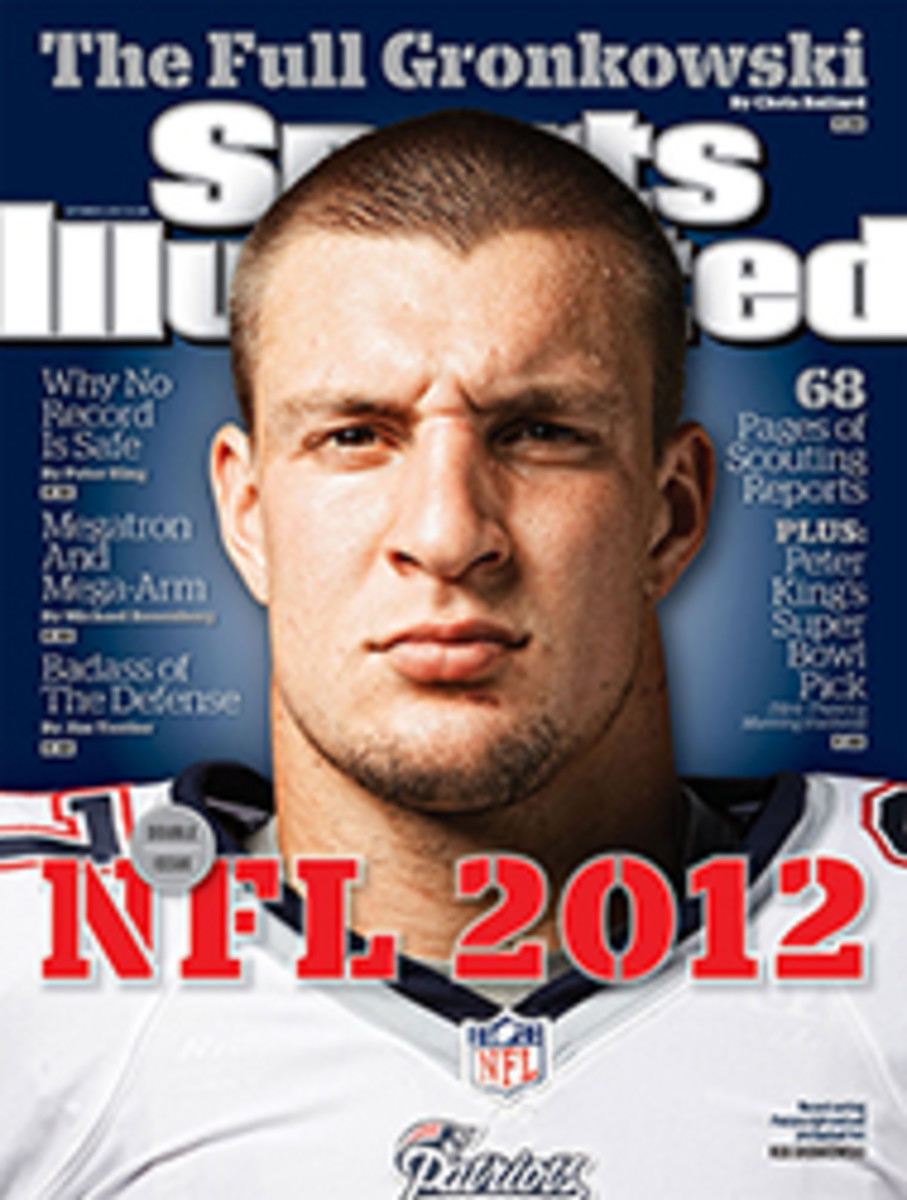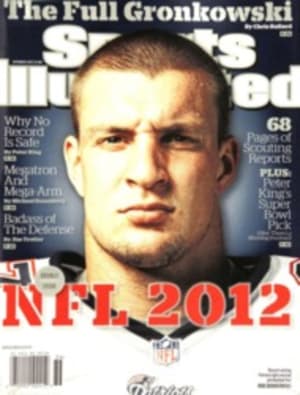
2 GREEN BAY: Packers
AS SUCCESSFUL as it seemed at the time, the 2011 season made for some strange days in Green Bay. In a few obvious and significant ways, the statistics compiled by the defending Super Bowl champions were as bizarrely lopsided as their almost-perfect 15--1 regular-season record. The Packers' unstoppable offense, behind league MVP Aaron Rodgers, shattered team records galore, led the NFL in scoring with 560 points (second most all time) and finished third in the league in total yards (405.1 per game).
But the underachieving defense slumped to dead last in opponents' total yards (411.6) and passing yards (299.8) while giving up 22.4 points per game (19th overall) and registering only 29 sacks (tied for 27th). It culminated in Green Bay's deflating one-and-done playoff performance, with that humbling 37--20 divisional-round loss to the streaking Giants at Lambeau Field, and a season that felt like it went for naught.
Changes had to be made. Determined to address the imbalance between offense and defense, the Packers in April spent their first six draft picks on defensive players, three times taking the very un--Green Bay--like step of trading up to secure the prospects they coveted. Be it quality or quantity they were after, the Packers got aggressive, and in doing so infused their defensive roster with much-needed youth and athleticism.
"It is on the defense this year," says veteran defensive back Charles Woodson, the leader of the unit. "We've got to carry our weight. We needed to get faster and get more of that fast-flowing defense we were used to. We have some pressure to bring our level of intensity up to where the offense is."
In the first round Green Bay took USC's Nick Perry to provide a bookend rush threat at outside linebacker opposite fellow Trojans alum and Pro Bowl talent Clay Matthews. The Packers then moved up eight spots in the second round to select Michigan State standout Jerel Worthy, whom they hope will eventually fill the 3--4 defensive end slot that hasn't been capably manned since Cullen Jenkins left through free agency after the 2010 season. Vanderbilt cornerback Casey Hayward arrived in another trade-up in round 3, and Green Bay kept the theme going by adding defensive tackle Mike Daniels of Iowa and Maine safety Jerron McMillian in the fourth round, and N.C. State linebacker Terrell Manning in the fifth.
The defensive rookie class largely showed up this preseason, and the top three picks—Perry, Worthy and Hayward—will be expected to contribute heavily from the outset. "We're demanding a lot of them," Matthews says. "A lot of times rookies have time to develop and get into the system, and they might not start to peak for two or three years. We need them to peak in the first, second or third game of the season."
Coaches and staff laud the energy and enthusiasm the rookies have brought to practices, and it's not hard to imagine a big bounce this season on defense. The numbers weren't all bad last year, and Green Bay's prolific offense obviously put the defense into the position of protecting big leads for prolonged stretches against hurry-up formations. Teams had to pass almost exclusively to try to stay on the field with Rodgers and company.
One continued strength is Green Bay's takeaway proficiency—the Packers had a league-best 31 interceptions, eight more than any other team. And they were a respectable 14th against the run (111.8 yards per game). But Green Bay allowed too many big plays (71 passes of 20 or more yards, second most in the league), missed too many tackles and couldn't prevent opponents from converting third downs (42.6%, 26th in the league). Rodgers thinks the Packers' secondary never overcame the apparent career-ending neck injury to three-time Pro Bowl safety Nick Collins in Week 2, which led to a seasonlong softness in the secondary. "We had to bring in some new guys and give us a push, because we don't want to be that weak link," cornerback Tramon Williams says. "It's a totally different mind-set here now. Whether we're playing with a lead or not, this year we're bringing it."
Projected Lineup
WITH 2011 STATS
OFFENSE 2011 RANK: 3
were exactly opposite. But both offenses have produced numbers and Super Bowls. I'm just glad to be a part of this one." He won't play 12 years with Rodgers, but the veteran doesn't want to put a time limit on his Green Bay tenure. "Let's just keep it going how we're going," he said. "I love playing the game. I'm going to keep playing as long as I feel good and feel like I'm contributing."
NUMBERS
150.2
Packers quarterbacks' collective passer rating when they threw to Jordy Nelson in 2011, the best in the league for any receiver.
75.7
Percentage of goal-to-go plays on which the Packers passed the ball, a league high. Green Bay had more goal-to-go passing TDs, 21, than any other team.
3.1
Yards per carry by the Packers on plays with a fullback (most often John Kuhn) in the backfield—1.3 yards less than on plays without one.
PHOTO
LENNY IGNELZI/AP (PERRY)
With opponents throwing so much, Perry will have plenty of chances to flex his muscles on the rush.
PHOTO
JONATHAN DANIEL/GETTY IMAGES (SATURDAY)

